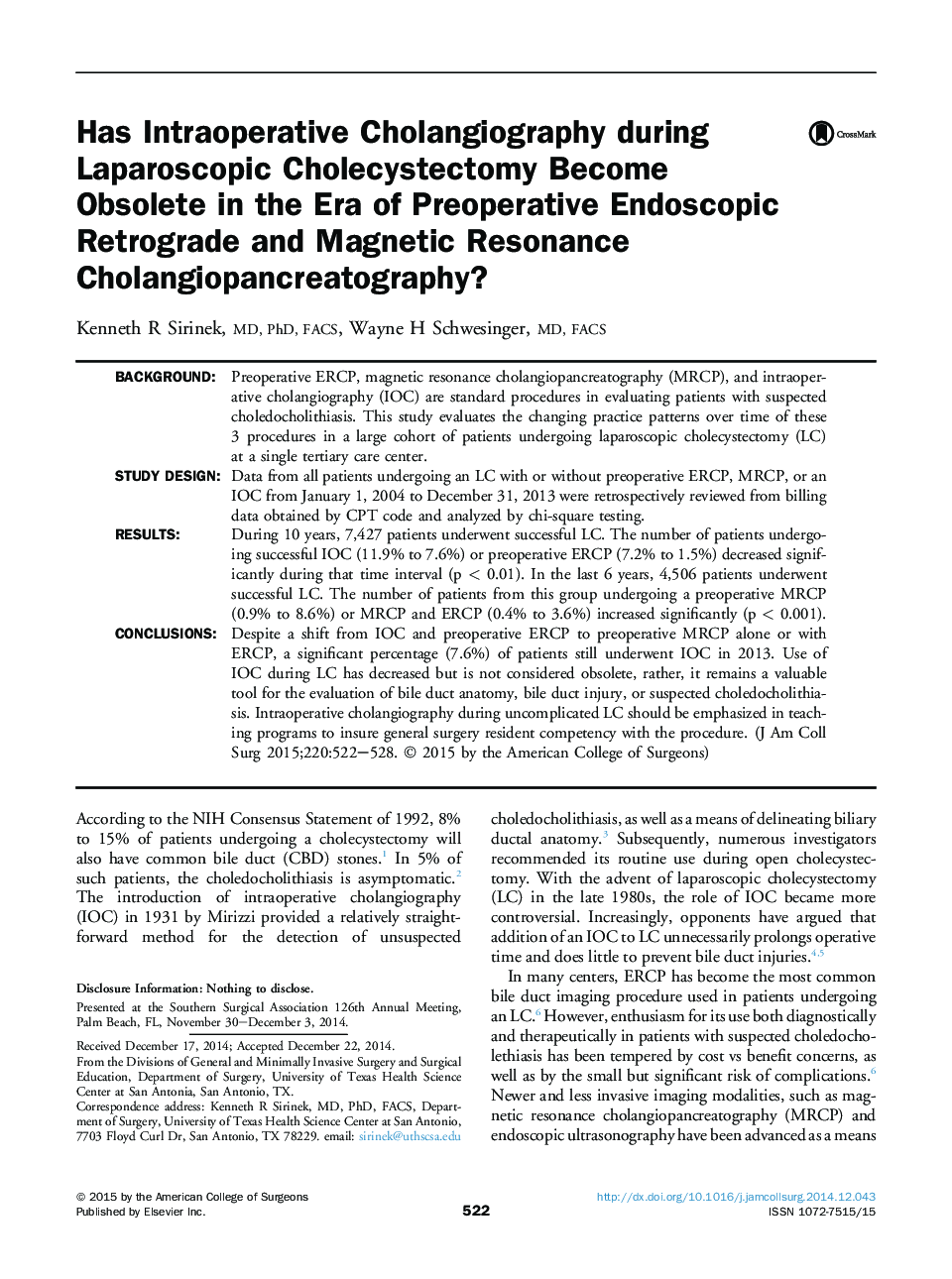| Article ID | Journal | Published Year | Pages | File Type |
|---|---|---|---|---|
| 4291350 | Journal of the American College of Surgeons | 2015 | 7 Pages |
BackgroundPreoperative ERCP, magnetic resonance cholangiopancreatography (MRCP), and intraoperative cholangiography (IOC) are standard procedures in evaluating patients with suspected choledocholithiasis. This study evaluates the changing practice patterns over time of these 3 procedures in a large cohort of patients undergoing laparoscopic cholecystectomy (LC) at a single tertiary care center.Study DesignData from all patients undergoing an LC with or without preoperative ERCP, MRCP, or an IOC from January 1, 2004 to December 31, 2013 were retrospectively reviewed from billing data obtained by CPT code and analyzed by chi-square testing.ResultsDuring 10 years, 7,427 patients underwent successful LC. The number of patients undergoing successful IOC (11.9% to 7.6%) or preoperative ERCP (7.2% to 1.5%) decreased significantly during that time interval (p < 0.01). In the last 6 years, 4,506 patients underwent successful LC. The number of patients from this group undergoing a preoperative MRCP (0.9% to 8.6%) or MRCP and ERCP (0.4% to 3.6%) increased significantly (p < 0.001).ConclusionsDespite a shift from IOC and preoperative ERCP to preoperative MRCP alone or with ERCP, a significant percentage (7.6%) of patients still underwent IOC in 2013. Use of IOC during LC has decreased but is not considered obsolete, rather, it remains a valuable tool for the evaluation of bile duct anatomy, bile duct injury, or suspected choledocholithiasis. Intraoperative cholangiography during uncomplicated LC should be emphasized in teaching programs to insure general surgery resident competency with the procedure.
